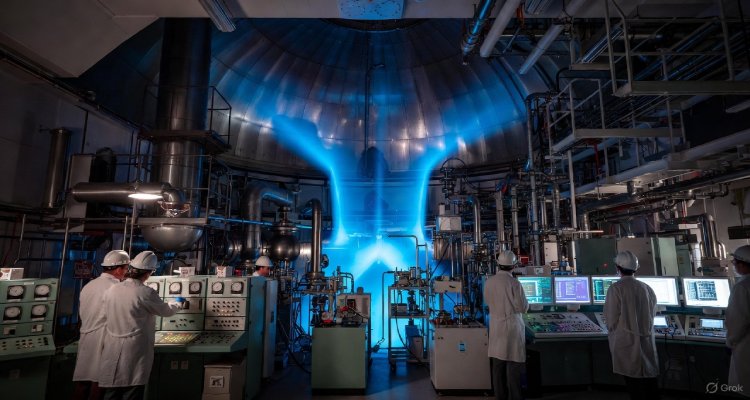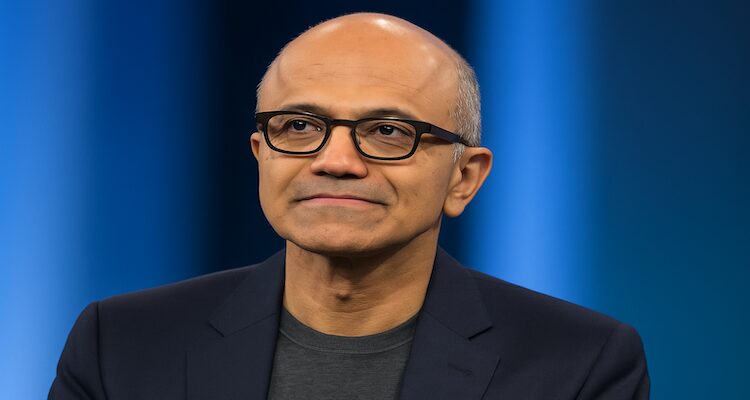When Your Boss Has GPT-5: Satya Nadella’s AI Playbook
Satya Nadella reveals how GPT-5 is transforming Microsoft 365 Copilot, offering a glimpse into AI-driven leadership, productivity, and the future of workplace accountability.
Introduction: A New Kind of Boss
Picture this: you enter a meeting expecting to present your progress, highlight achievements, and cushion setbacks. Instead, your boss already has every update summarized, contextualized, and cross-checked against targets. They know what’s on your mind, where risks lie, and which tough questions to ask. That boss may not be humanly omniscient, but with GPT-5 built into Microsoft 365 Copilot, they might feel like it.
This scenario is no longer hypothetical. Microsoft CEO Satya Nadella recently shared how he uses five specific GPT-5 prompts to run his daily workflow. The result is an unprecedented level of preparedness and a clear signal that the future of work is moving toward AI-assisted leadership.
Microsoft’s AI Integration: From Tools to Partners
For years, AI has been quietly embedded in workplace tools suggesting email replies, auto-correcting documents, and pulling together meeting transcripts. But with GPT-5 integrated into Microsoft 365 Copilot, Nadella suggests something more profound: AI that understands context, predicts needs, and reshapes executive decision-making.
“It’s been a few weeks since we brought GPT-5 to Microsoft 365 Copilot, and it’s quickly become part of my everyday workflow,” Nadella wrote on X. “It’s adding a new layer of intelligence across all my apps.”
The phrasing a new layer of intelligence is telling. Copilot isn’t just handling routine chores; it’s acting as a strategic assistant.
Breaking Down Nadella’s Five Prompts
Nadella revealed five prompts he uses daily. Each represents a different dimension of AI’s potential in leadership:
1. Anticipating What Matters Most
Copilot reviews past conversations with a colleague and predicts five likely priorities for the next meeting. For leaders, this eliminates guesswork; for employees, it raises the stakes. Walking into a room where your boss already knows your likely concerns changes the tone of collaboration.
2. Consolidating Project Updates
Instead of wading through emails, chats, and meeting notes, Nadella asks Copilot to compile a project summary: KPIs, risks, wins, and even likely tough questions. This transforms raw communication into actionable intelligence essentially a living dashboard of accountability.
3. Checking Launch Readiness
By asking if a product is on track, Copilot generates a probability forecast based on engineering progress, pilot program results, and known risks. It reframes accountability from subjective updates to data-driven predictions.
4. Auditing Time Spent
Nadella’s calendar and inbox are analyzed to categorize how he spent the past month. This allows him to see, in percentage terms, whether his time aligns with his priorities. It’s the executive equivalent of a fitness tracker but for productivity.
5. Contextual Meeting Preparation
Before a meeting, Copilot reviews a selected email and places it in the context of previous team discussions. Instead of starting from scratch, Nadella enters meetings already briefed on both current issues and their historical trajectory.
Beyond Automation: A Shift Toward Predictive Leadership
These prompts go beyond simple efficiency. They represent a fundamental shift in how leadership can operate in an AI-powered workplace:
-
From reaction to prediction: Leaders don’t just respond to updates they anticipate them.
-
From information overload to distilled clarity: AI filters the noise and surfaces what matters most.
-
From subjective management to quantified accountability: Progress is assessed in probabilities, not platitudes.
For executives, this promises sharper decision-making. For employees, however, it might mean fewer places to hide when deadlines slip or risks emerge.
Expert Perspective: Productivity vs. Pressure
The double-edged nature of AI in leadership cannot be ignored. On one hand, tools like Copilot democratize access to high-quality analysis, ensuring managers at all levels can operate with more foresight. On the other, they may inadvertently amplify workplace pressure.
Imagine a junior project manager preparing for a weekly check-in. Instead of shaping the narrative, they find themselves facing an AI-generated summary that already highlights missed KPIs or unresolved risks. Transparency increases but so does scrutiny.
Nadella himself framed Copilot as a way to lighten information overload, but the cultural impact may vary widely across organizations. In a supportive environment, it becomes a safety net. In a high-pressure culture, it may feel like constant surveillance.
Microsoft’s Strategic Advantage
From a business perspective, Nadella’s public reveal also serves another purpose: it’s a powerful endorsement of Microsoft 365 Copilot. By showing how deeply he relies on it, Nadella underscores its value as a must-have tool for modern executives.
This positions Microsoft not just as a software provider but as a workplace intelligence partner. The company’s bet is clear: the future of enterprise productivity will be defined not by faster spreadsheets or better presentations, but by AI systems that think with you.
Industry Implications: What Competitors Are Doing
Microsoft is not alone in this race. Google’s Workspace has its own AI assistant, Gemini, while OpenAI continues pushing ChatGPT into business workflows. But Nadella’s real advantage lies in integration. Microsoft 365 is already embedded in the daily workflow of millions of companies. With GPT-5 layered into Outlook, Teams, and Word, adoption is almost frictionless.
For competitors, the challenge isn’t just building smarter AI it’s embedding it where people already work. Nadella’s example shows how AI becomes indispensable not as a standalone app, but as an invisible layer across tools.
The Future of Work: AI as a Manager’s Mirror
Nadella’s five prompts provide a glimpse into what the workplace of the near future could look like:
-
Meetings without surprises: Everyone walks in knowing the stakes.
-
Projects tracked in real-time: Progress and risks are constantly updated.
-
Time spent measured with precision: No more illusions about priorities.
-
Decisions made with foresight: Leaders act on probabilities, not assumptions.
For employees, this may feel like increased pressure. For leaders, it promises clarity in a chaotic world. The balance between empowerment and surveillance will determine whether AI strengthens collaboration or deepens stress.
Conclusion: The AI-Augmented Boss Is Here
By publicly sharing his own workflow, Satya Nadella has offered more than just a set of clever prompts. He’s unveiled the blueprint of AI-assisted leadership.
The message is unmistakable: the future boss won’t just rely on intuition, experience, or even human reports. They’ll have an AI copilot that knows their schedule, anticipates their priorities, and prepares them for every challenge.
Whether this future excites or unnerves you may depend on where you sit at the conference table. But one thing is clear if your boss starts using Nadella’s five GPT-5 prompts, the workplace will never feel the same again.
(Disclaimer: Fact-based feature drawing on Satya Nadella’s public statements. It reflects analysis of AI’s role in productivity and leadership without speculative claims.
Also Read: Why People Trust AI More Than Humans in 2025—And Why That’s Dangerous











